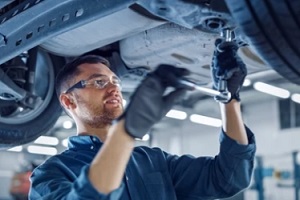 If you are considering an engine swap for your vehicle, you should be aware that the process is much more nuanced than simply selecting a new engine and placing it in the bay where your old engine used to sit. In fact, if you come into the process unprepared, you could be facing significant additional expense or even the prospect that the engine you selected is simply not compatible with your vehicle or your goals. Before swapping your engine, be sure to consider the following tips so that you can come into the project prepared.
If you are considering an engine swap for your vehicle, you should be aware that the process is much more nuanced than simply selecting a new engine and placing it in the bay where your old engine used to sit. In fact, if you come into the process unprepared, you could be facing significant additional expense or even the prospect that the engine you selected is simply not compatible with your vehicle or your goals. Before swapping your engine, be sure to consider the following tips so that you can come into the project prepared.
Oil Pan And Fabrication
The reality is that when you swap an engine, you are not going to get exactly the same fit and alignment as the machine that came with the vehicle. This means that your cross-members will likely not be immediately compatible with the chassis in such a way that your oil pan has enough clearance.
Aftermarket oil pans can provide a solution to a lucky few who can find ones that are compatible and in acceptable condition, but many engine swaps are going to require custom fabrication or alteration of an oil pan to get it to cooperate with the orientation of the new engine. Fabrication of this particular piece of equipment is not the most complex process, but you must still remember to budget in this additional work, as well as the creation of pick-up tubing.
Air Conditioning Compatibility
Like the difficulty in orienting an oil pan after an engine swap, you may face the same sorts of problems with the air conditioning system. Even if you elect not to have air conditioning in your vehicle, you will still need to contend with the fact that many of the engines you have to pick from mount their air condition compressors on the bottom or lower engine areas instead of the top.
This means that even a simple task such as fitting the engine into the area in between the frame rails can hit a snag. If you do choose to keep the air conditioning, you may need to move the compressor to a different location—and do not forget that you will also need to find an appropriate spot for the rest of the system, such as the accumulator.
Wiring Within The System
 If you have not yet gotten the impression that an engine swap may require significant modifications in some cases, you may need to take a step back and think further about your goals and wants. You will also need to contend with wiring everything after you have made all of the important parts fit. This means tying a circuit into the AC system and cooling system using one or two separate relays. If you are not comfortable doing this type of wiring yourself, be prepared to budget in assistance for this step.
If you have not yet gotten the impression that an engine swap may require significant modifications in some cases, you may need to take a step back and think further about your goals and wants. You will also need to contend with wiring everything after you have made all of the important parts fit. This means tying a circuit into the AC system and cooling system using one or two separate relays. If you are not comfortable doing this type of wiring yourself, be prepared to budget in assistance for this step.
Header Fabrication
Just like the oil pan, fabrication of some of the exhaust systems is often needed. The header area contains a significant number of important features for your vehicle, and you will need to navigate not only the actual exhaust (which often requires repeat fabrications for inexperienced swappers who find that their tubing hits the frame) but also where to keep the wires in the area, how to place spark plugs and so on.
Fluid Reservoirs
One common theme among engine swap projects is that you are typically not moving just the engine, but rather many of the other parts as well to accommodate the new shape. This includes fluid reservoirs. Again, the cooling system does not often present as much of a problem as something like the reservoir for your power steering fluid, because the amount of space that you have to work with—especially with certain popular engines—can become extremely cramped very quickly.
Trust The Experts to Help You Achieve The Ideal Engine Swap
 Whether you are just considering an engine swap for the first time in order to get your vehicle to the state you have always dreamed of or you are in the middle of an engine swap and have come upon an unexpected problem, it is smart to keep an experienced auto shop on standby for any questions.
Whether you are just considering an engine swap for the first time in order to get your vehicle to the state you have always dreamed of or you are in the middle of an engine swap and have come upon an unexpected problem, it is smart to keep an experienced auto shop on standby for any questions.
At Robs Customs & Restorations, we have years of experience successfully completing engine swaps so that you can realize your vision for your vehicle and continue to drive it safely for many years to come. Contact us (703) 420-3832 if you have any questions or would like some assistance in completing your project. We are happy to help, whether on a single task or on tackling the entire swap process for you.
